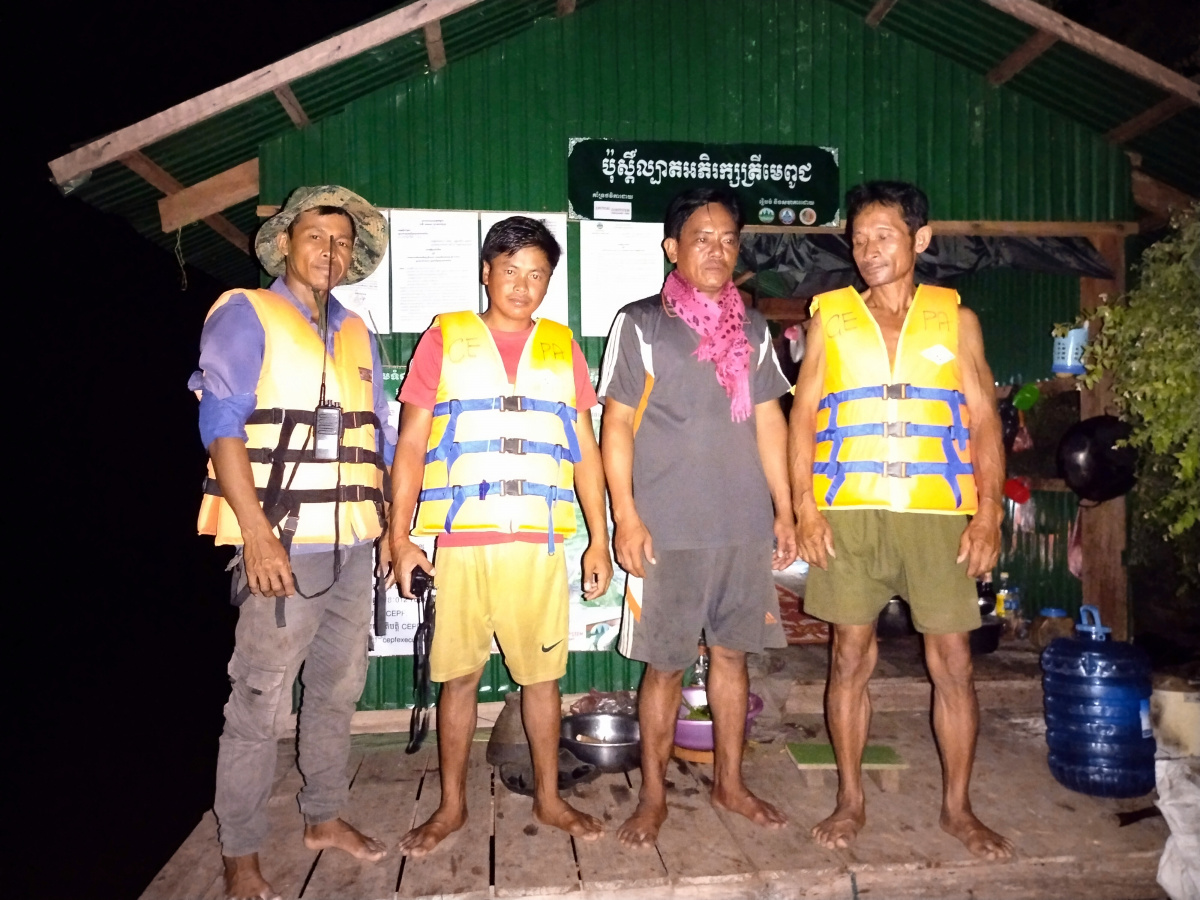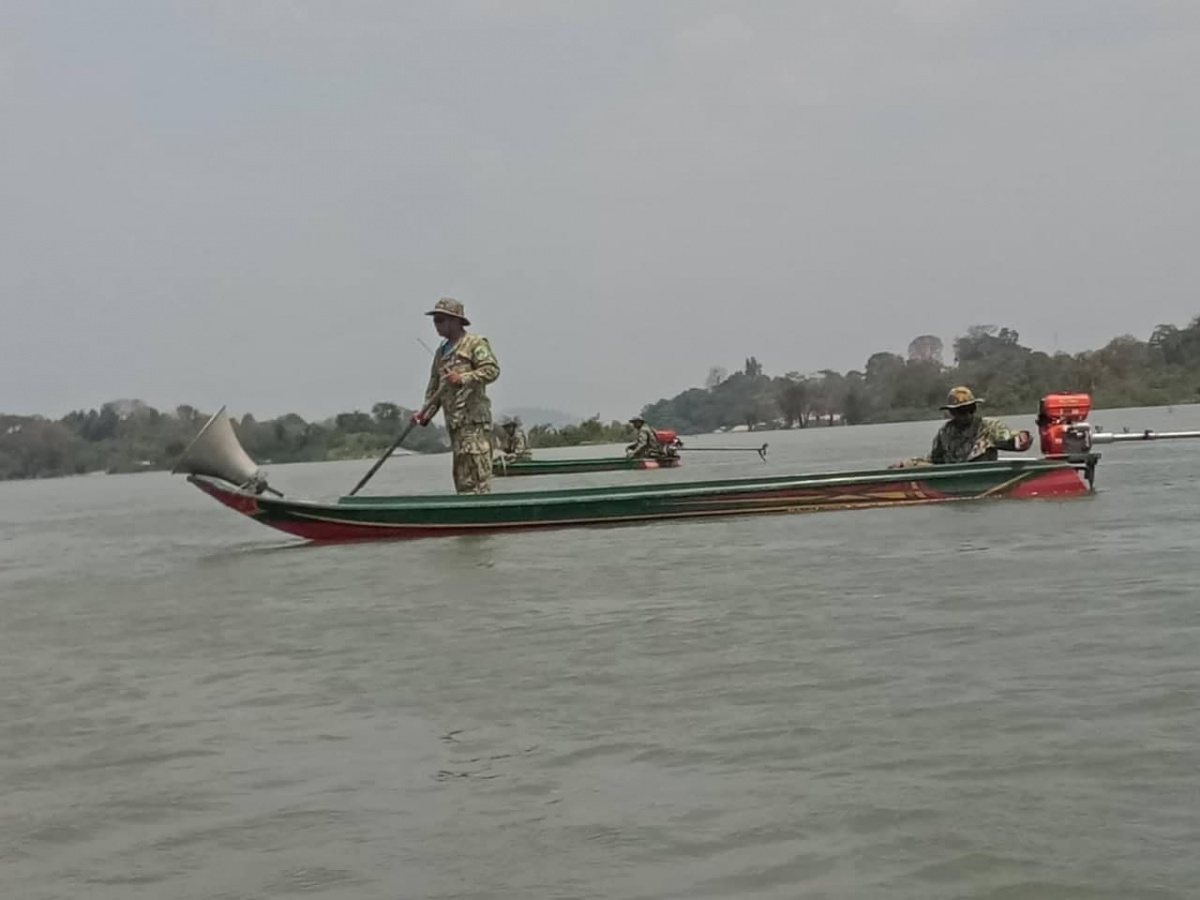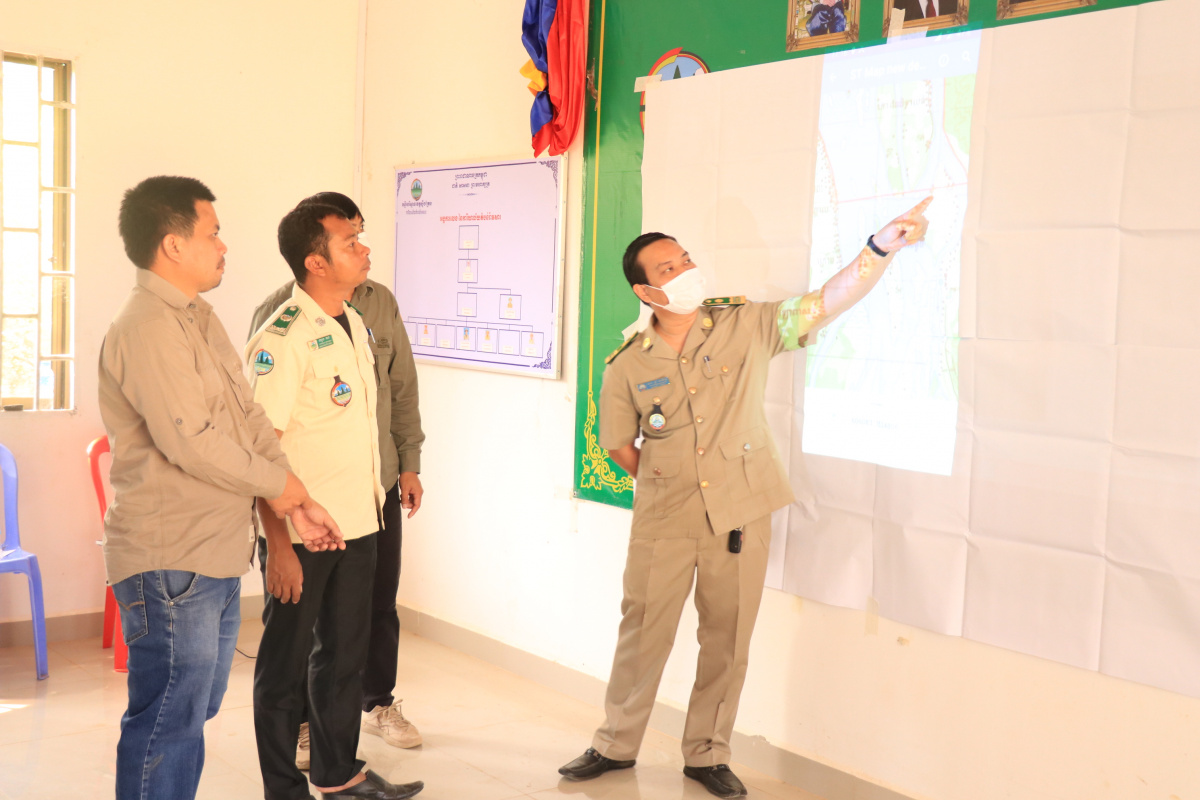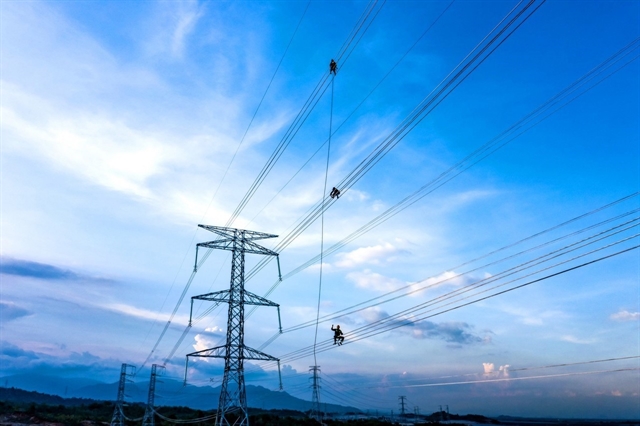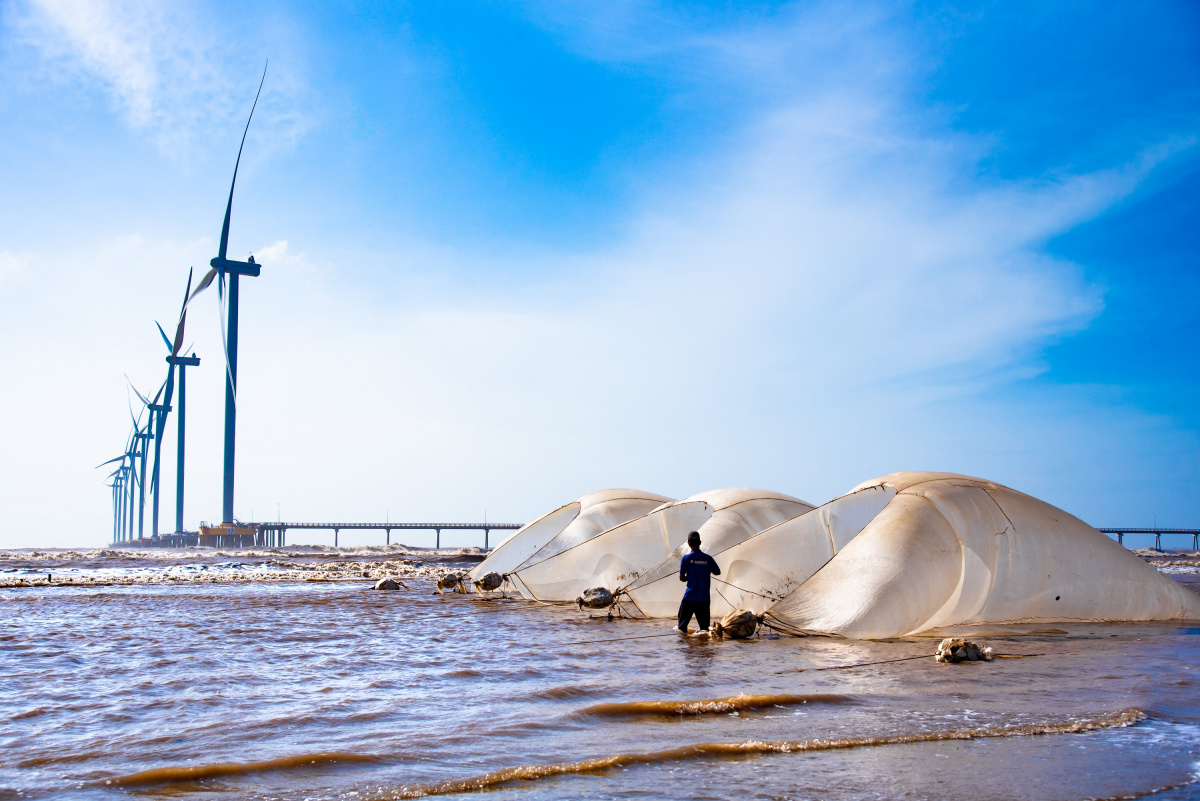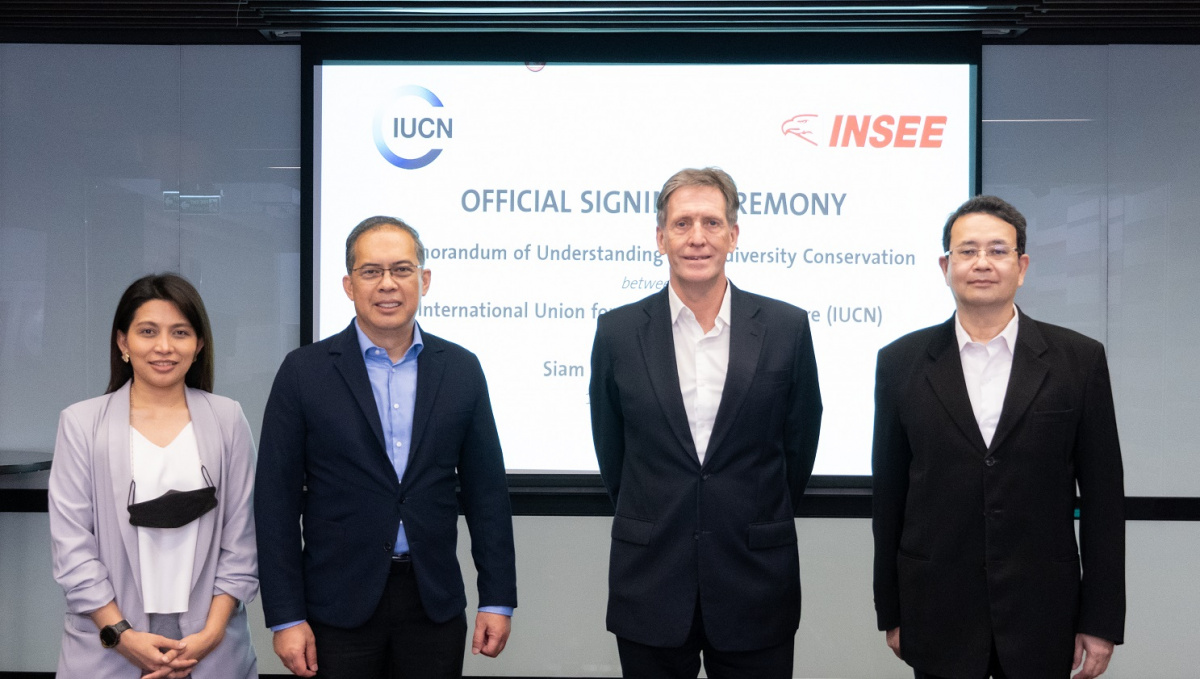Conserving fisheries: development of broodstock protection zones in Stung Treng Ramsar Site, Cambodia
Supported by a small grant from the Mekong WET project, the Culture and Environment Preservation Association (CEPA) in Cambodia is supporting local managers to enhance fisheries management in Stung Treng Ramsar Site. The “Mekong Broodstock Protection in Stung Treng Ramsar Site” project aims to protect spawning fish by strengthening enforcement at the site, educating communities about the importance of the area, and developing sustainable financing to support local communities.
Stung Treng’s abundant deep pools, islands, and inundated forests provide key habitats for broodfish to spawn, sustaining fish stocks that directly support local livelihoods. CEPA aims to strengthen the protection of breeding fish to allow them to release their eggs, increasing fish stocks, diversity, and sustainable natural capital.
"Establishing broodstock zones within the Ramsar site allows for the protection of broodfish or mother fish. The project is strengthening collaboration among key stakeholders during the closed fishing season, from 1 May to 30 September, when the broodstocks are the most vulnerable. Our rangers are excited to join this initiative, together with the Fishery Administration Cantonment, the community fishery, local police, and district authorities," said Mr. Chhuon Chhorn, Vice Director of the Ramsar site.
The idea for the project builds on similar initiatives at the site. Two broodstock zones have already been established within the Ramsar site, and there are three additional protection areas within the province. Mr. Tum Nyro, Acting Director of Provincial Department of Forestry and Fishery in Stung Trang noted, “During the 2020 closed fishing season, more than 7,000 tons of broodfish were protected from fishing, allowing them to safely migrate to the spawning grounds to reproduce.”
During consultations with stakeholders, participants suggested the development of new broodstock protection zones in Koh Russey and Koh Traeng, two islands where fishers have historically caught numerous fishes during the spawning season. Rangers will patrol the surrounding area, ensuring that community fishers follow fishery law guidelines that prohibit the use of large-scale fishing gear, such as long gillnets during the closed fishing season.
The project also supports sustainable financing schemes, including a credit scheme and mini-trust fund for community fisheries management. These financing approaches aim to support the local community, compensating them for lost fisheries income. In addition, the project will implement an awareness-raising campaign to improve local understanding of fisheries law, particularly during the closed fishing season. This activity is organised by the Community Fishery Management Committee and the Community Fishery network.
Stung Treng Ramsar Site is situated on the Mekong River between the Lao border and Stung Treng town (also written Stoeng Treng) in Cambodia. Along this stretch, the river is fast flowing with deep pools and numerous channels running between rocky and sandy islands. It was designated as a Ramsar Site in 1999 because it contains a unique seasonally flooded riverine forest habitat, and is also home to the Irrawaddy Dolphin Orcaella brevirostris and the Mekong Giant Catfish Pangasianodon gigas.
More than 10,000 people live in or close to the Ramsar Site, and most of them rely on the Mekong for their food and livelihoods. Fish is the major source of protein and is also harvested to be sold. Many other species are also used, such as snails, crabs, and frogs for food, and various plants for fuelwood, building, crafts and medicine. The regular flooding of the river supports paddy rice farming.
The Mekong WET Small Grants fund several wetlands projects in the Indo-Burma region. These initiatives are directly answering specific climate threats to wetland ecosystems, species, and communities using Ecosystem-based Adaptation strategies as the main approach.
About MWET
Funded by the International Climate Initiative (IKI) of the German Federal Ministry for the Environment, Nature Conservation, Building and Nuclear Safety (BMUB), the “Mekong WET: Building Resilience of Wetlands in the Lower Mekong Region” project aims to build climate resilience by harnessing the benefits of wetlands in Cambodia, Lao PDR, Thailand, and Viet Nam.
Mekong WET will help the four countries to address their commitments to the Ramsar Convention, an international treaty for the conservation and sustainable use of wetlands, and to achieve the Aichi Biodiversity Targets.
About IBRRI
The Indo-Burma Ramsar Regional Initiative (IBRRI) was jointly developed by the Ramsar National Focal Points of the five countries (Cambodia, Lao PDR, Myanmar, Thailand, and Viet Nam), and IUCN’s Asia Regional Office, based on specific needs identified in these countries. It was endorsed by the 52nd meeting of the Ramsar Convention Standing Committee in June 2016. The IBRRI aims to support the coordinated implementation of the objectives of the Strategic Plan of the Ramsar Convention. IUCN acts as the Secretariat for the Initiative under the leadership of the Steering Committee, which includes representatives from the five governments and the Ramsar Convention Secretariat as an observer.

